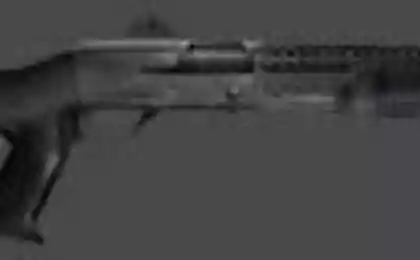859
Collimator sights
Good afternoon, yapovtsy! Not later than before the holidays, I was talking to a man and realized that he did (or at all) does not understand about the subject of conversation. And we talked about the reflex sight. My companion punctually called them the "optical", that "sniper". This conversation led me to believe that it would be good to explain available to all who want to know what kind of a miracle. So I tell short and simple. I also want to say that I am not a professional and I can make mistakes or miss any detail. If you notice such a school in my gradual supplemented and corrected.
So, a bit of history.
The first collimator sights appeared in aviation. The fact is that an increase in capacity and speed of the aircraft pilot was extremely uncomfortable with using the classical aims of sight. For too long, too difficult, too dangerous (because until tselishsya, then willy-nilly stabiliziruesh flight itself becomes the target) ... Roughly speaking, the engineers thought sat, and made a new aircraft sight, which allowed aims without interrupting piloting who lent angles pilot.
7 photos + video.
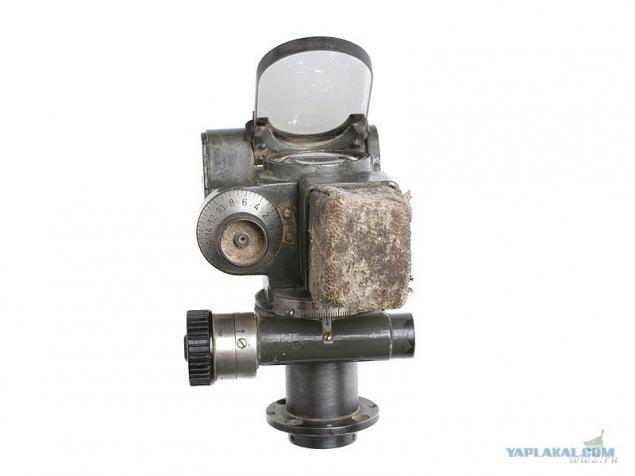
Principle of operation (if briefly) is simple. Reticle is projected onto the glass of the sight and the pilot sees a sighting grid .. (photo 1)
Posted in [mergetime] 1388994353 [/ mergetime]
(Photo 2)
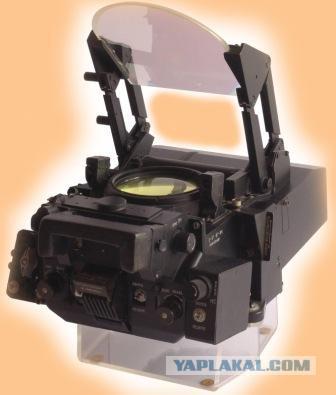
(Photo 2)

Then scopes based aircraft moved on anti-aircraft guns which were used until the 80s of the last century.
Paradoxically, but the first collimator sight went on sale was not the military, and issued by a private company and positioned it as a sport for bench shooting Nydar shotgun sight model 47. This sight has a number of features compared to the aviation sights, and modern too. The main feature of this sight that the reticle in the form of a beam of light projected toward the eye is not an arrow, but on the contrary - in the direction of the target (parallel to the barrel) goes to infinity. As a result, even the shifting opinion towards the shooter seen reticle. The Achilles heel of sight has become a source of light for the construction of the sighting mark, or rather its absence. Instead, the light bulb was used sunlight, which focused system of mirrors and lenses into a narrow beam directed parallel to the barrel in the direction of the target. Before the beam installed slabotonirovannuyu, zazerkalennuyu lens through which the coming of the light reflected by building an image of the target reticle. (Photo 3)

Anyway, this sight was a breakthrough and opened the era of the collimator sights for firearms.
The modern era.
So first a little determination.
Collimation - is the process of producing beams of parallel rays, corresponding to an infinitely distant point. That it is based and the principle of operation of this type of sighting devices.
Roughly speaking, you see the point in sight (or other reticle) that shows where you are shooting (assuming sight sighted). Modern collimator sights or have a multiplicity of small or do not have it at all ...
The main structural elements of the sight - a thin-walled single lens, set at a slight angle to the line of sight, and an emitter forming (usually by means of LEDs and aperture) luminous image of the aiming mark, which often represents a single point of red, although there are more sophisticated variants thereof . On the concave side of the lens coated beam splitter (translucent reflex) coating the emitter is formed in the focal plane of the collecting lens, but outside the optical axis. This design allows the shooter at the same time to see how virtually undistorted space behind the lens and the image of the aiming mark. When you hover over any purpose weapon the position of the luminous point is not rigidly connected to the body ... and with sight of the goal! When looking at the target through a "collimator", move your head from side to side, it appears that the mark "floats" within sight, strictly holding the line of sight.
As a result, the shooter, using collimator sight, one eye sees all its surroundings, including the purpose, and the other - a goal bright reticle and almost everything except the covered body of the sight area surrounding space. Due to the properties of the subconscious to combine into one image from different eyes, the ultimate picture and contains no overlapping, volume perceived by the surrounding space, and the reticle. For aiming only required to combine with the brand visible through the sight of the purpose, not thinking about the correct position of the head, and then returns a shot line of sight, though shifting, but not "lost" that is, is completely under the control of the arrow.
"Collimators," are divided into open and closed. The first is easier and almost never cover the field of view, even for the "impact" the eye, but the radiator in them is not protected from the environment, and in the case of contamination reticle "spreads" or even biased. Closed this disease do not suffer, but much heavier, that is stronger than change the balance of weapons. Almost always, for use in different lighting conditions reticle has adjustable automatically or manually the backlight level.
pictured is the open sight

indoor sight
Posted in [mergetime] 1388994734 [/ mergetime]
www.youtube.com/watch?v=M7HvZ6yGiaEОдин of the most significant disadvantages is kollimatorov- batteries. sights used batteries and must be prepared that sooner or later they will sit down and the sight will not operate.
Posted in [mergetime] 1388994839 [/ mergetime]
One of the biggest drawbacks is kollimatorov- batteries . sights used batteries and must be prepared that sooner or later they will sit down and the sight will not operate.
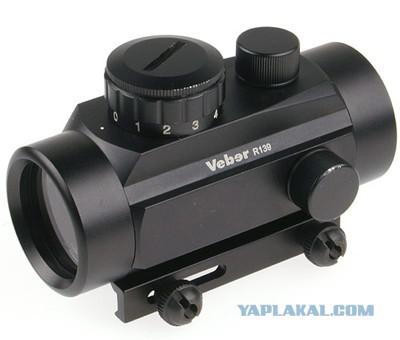
Recently appeared on the market for pribludy collimator sights (pribludy for Pribluda) called magnifery. It is allowing us to make special adaptations of the optical collimator sight.

In this I think I will finish. Ask to speak, your Haupman.
py.sy ... kstati.est still golografichskie sights, but please requests, they are for me the dark forest ... so I bypassed them ... who smozhet- enlighten!
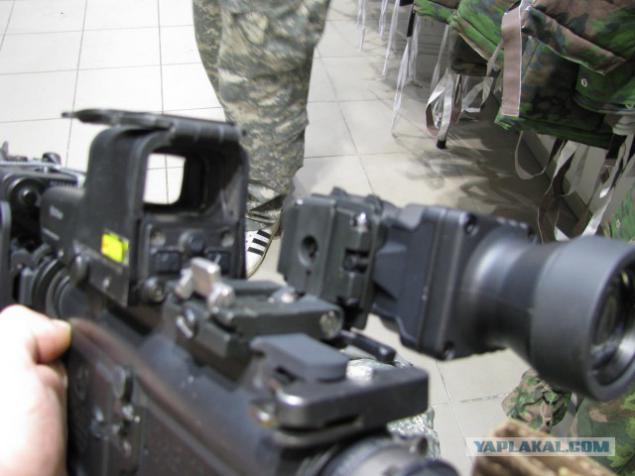
Source:
So, a bit of history.
The first collimator sights appeared in aviation. The fact is that an increase in capacity and speed of the aircraft pilot was extremely uncomfortable with using the classical aims of sight. For too long, too difficult, too dangerous (because until tselishsya, then willy-nilly stabiliziruesh flight itself becomes the target) ... Roughly speaking, the engineers thought sat, and made a new aircraft sight, which allowed aims without interrupting piloting who lent angles pilot.
7 photos + video.

Principle of operation (if briefly) is simple. Reticle is projected onto the glass of the sight and the pilot sees a sighting grid .. (photo 1)
Posted in [mergetime] 1388994353 [/ mergetime]
(Photo 2)

(Photo 2)

Then scopes based aircraft moved on anti-aircraft guns which were used until the 80s of the last century.
Paradoxically, but the first collimator sight went on sale was not the military, and issued by a private company and positioned it as a sport for bench shooting Nydar shotgun sight model 47. This sight has a number of features compared to the aviation sights, and modern too. The main feature of this sight that the reticle in the form of a beam of light projected toward the eye is not an arrow, but on the contrary - in the direction of the target (parallel to the barrel) goes to infinity. As a result, even the shifting opinion towards the shooter seen reticle. The Achilles heel of sight has become a source of light for the construction of the sighting mark, or rather its absence. Instead, the light bulb was used sunlight, which focused system of mirrors and lenses into a narrow beam directed parallel to the barrel in the direction of the target. Before the beam installed slabotonirovannuyu, zazerkalennuyu lens through which the coming of the light reflected by building an image of the target reticle. (Photo 3)

Anyway, this sight was a breakthrough and opened the era of the collimator sights for firearms.
The modern era.
So first a little determination.
Collimation - is the process of producing beams of parallel rays, corresponding to an infinitely distant point. That it is based and the principle of operation of this type of sighting devices.
Roughly speaking, you see the point in sight (or other reticle) that shows where you are shooting (assuming sight sighted). Modern collimator sights or have a multiplicity of small or do not have it at all ...
The main structural elements of the sight - a thin-walled single lens, set at a slight angle to the line of sight, and an emitter forming (usually by means of LEDs and aperture) luminous image of the aiming mark, which often represents a single point of red, although there are more sophisticated variants thereof . On the concave side of the lens coated beam splitter (translucent reflex) coating the emitter is formed in the focal plane of the collecting lens, but outside the optical axis. This design allows the shooter at the same time to see how virtually undistorted space behind the lens and the image of the aiming mark. When you hover over any purpose weapon the position of the luminous point is not rigidly connected to the body ... and with sight of the goal! When looking at the target through a "collimator", move your head from side to side, it appears that the mark "floats" within sight, strictly holding the line of sight.
As a result, the shooter, using collimator sight, one eye sees all its surroundings, including the purpose, and the other - a goal bright reticle and almost everything except the covered body of the sight area surrounding space. Due to the properties of the subconscious to combine into one image from different eyes, the ultimate picture and contains no overlapping, volume perceived by the surrounding space, and the reticle. For aiming only required to combine with the brand visible through the sight of the purpose, not thinking about the correct position of the head, and then returns a shot line of sight, though shifting, but not "lost" that is, is completely under the control of the arrow.
"Collimators," are divided into open and closed. The first is easier and almost never cover the field of view, even for the "impact" the eye, but the radiator in them is not protected from the environment, and in the case of contamination reticle "spreads" or even biased. Closed this disease do not suffer, but much heavier, that is stronger than change the balance of weapons. Almost always, for use in different lighting conditions reticle has adjustable automatically or manually the backlight level.
pictured is the open sight

indoor sight
Posted in [mergetime] 1388994734 [/ mergetime]
www.youtube.com/watch?v=M7HvZ6yGiaEОдин of the most significant disadvantages is kollimatorov- batteries. sights used batteries and must be prepared that sooner or later they will sit down and the sight will not operate.
Posted in [mergetime] 1388994839 [/ mergetime]
One of the biggest drawbacks is kollimatorov- batteries . sights used batteries and must be prepared that sooner or later they will sit down and the sight will not operate.

Recently appeared on the market for pribludy collimator sights (pribludy for Pribluda) called magnifery. It is allowing us to make special adaptations of the optical collimator sight.

In this I think I will finish. Ask to speak, your Haupman.
py.sy ... kstati.est still golografichskie sights, but please requests, they are for me the dark forest ... so I bypassed them ... who smozhet- enlighten!

Source:
